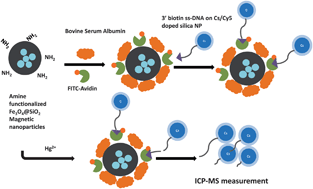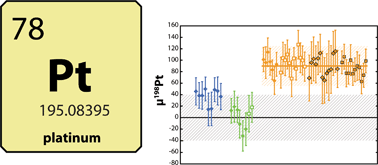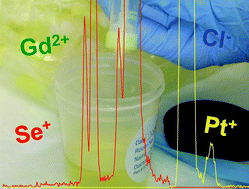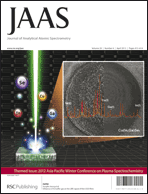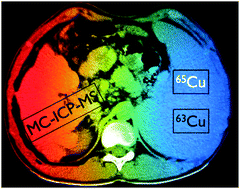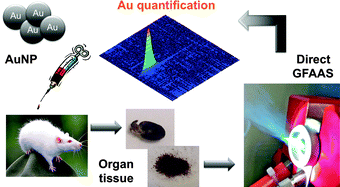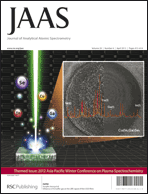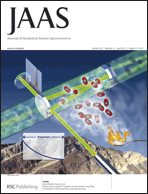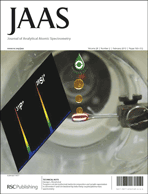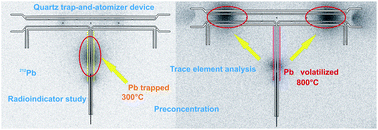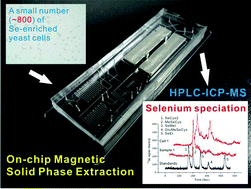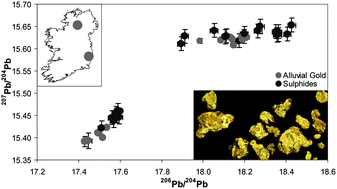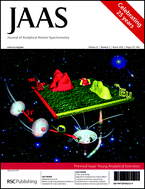The first issue of JAAS for 2013 is finally online!
To start with, our editorial from the JAAS Editor May Copsey and the Chair of JAAS Editorial Board Frank Vanhaecke, summaries the great success of JAAS in promoting the most recent advances in the field of atomic and elemental analytical techniques in a wide range of applications.
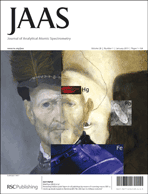
Alfeld et al., J. Anal. At. Spectrom., 2013, 28, 40-51
Then we have these new interesting covers for you to enjoy the beginning of the year.
The Rembrandt painting “An old man in military costume”, from the collection of the J. Paul Getty Museum, features the outside front cover of this issue. Matthias Wilhelm Alfeld and his group from the University of Antwerp created a “free impression” of a previously discovered hidden portrait, by using a mobile X-ray tube based system and two synchrotron-based setups. The full-scale mock-up of the painting obtained reproduces as closely as possible the pigments and the stratigraphy of the original painting.
Revealing hidden paint layers in oil paintings by means of scanning macro-XRF: a mock-up study based on Rembrandt’s “An old man in military costume”
Matthias Alfeld, Wout De Nolf, Simone Cagno, Karen Appel, D. Peter Siddons, Anthony Kuczewski, Koen Janssens, Joris Dik, Karen Trentelman, Marc Walton and Andrea Sartorius
J. Anal. At. Spectrom., 2013, 28, 40-51
DOI: 10.1039/C2JA30119A
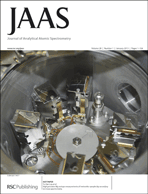
Luu et al., J. Anal. At. Spectrom., 2013, 28, 67-76
Our inside front cover comes from the work of Tu-Hann Luu end co-workers, from the Sorbonne University, Paris. This study reports a detailed analytical method for high precision in situ Mg isotopic measurements, which can be applied to meteoritic samples to precisely define their period of formation.
High precision Mg isotope measurements of meteoritic samples by secondary ion mass spectrometry
Tu-Han Luu, Marc Chaussidon, Ritesh Kumar Mishra, Claire Rollion-Bard, Johan Villeneuve, Gopalan Srinivasan and Jean-Louis Birck
J. Anal. At. Spectrom., 2013, 28, 67-76
DOI: 10.1039/C2JA30187C
And now, take a look at these selected HOT articles for you, free to read until December 21st:
Accurate determination of S in organic matrices using isotope dilution ICP-MS/MS
Lieve Balcaen, Glenn Woods, Martín Resano and Frank Vanhaecke
J. Anal. At. Spectrom., 2013, 28, 33-39
DOI: 10.1039/C2JA30265A
Statistical bias in isotope ratios
Christopher D. Coath, Robert C. J. Steele and W. Fred Lunnon
J. Anal. At. Spectrom., 2013, 28, 52-58
DOI: 10.1039/C2JA10205F
Investigation at the nanometre scale on the corrosion mechanisms of archaeological ferrous artefacts by STXM
A. Michelin, E. Drouet, E. Foy, J. J. Dynes, D. Neff and P. Dillmann
J. Anal. At. Spectrom., 2013, 28, 59-66
DOI: 10.1039/C2JA30250K
